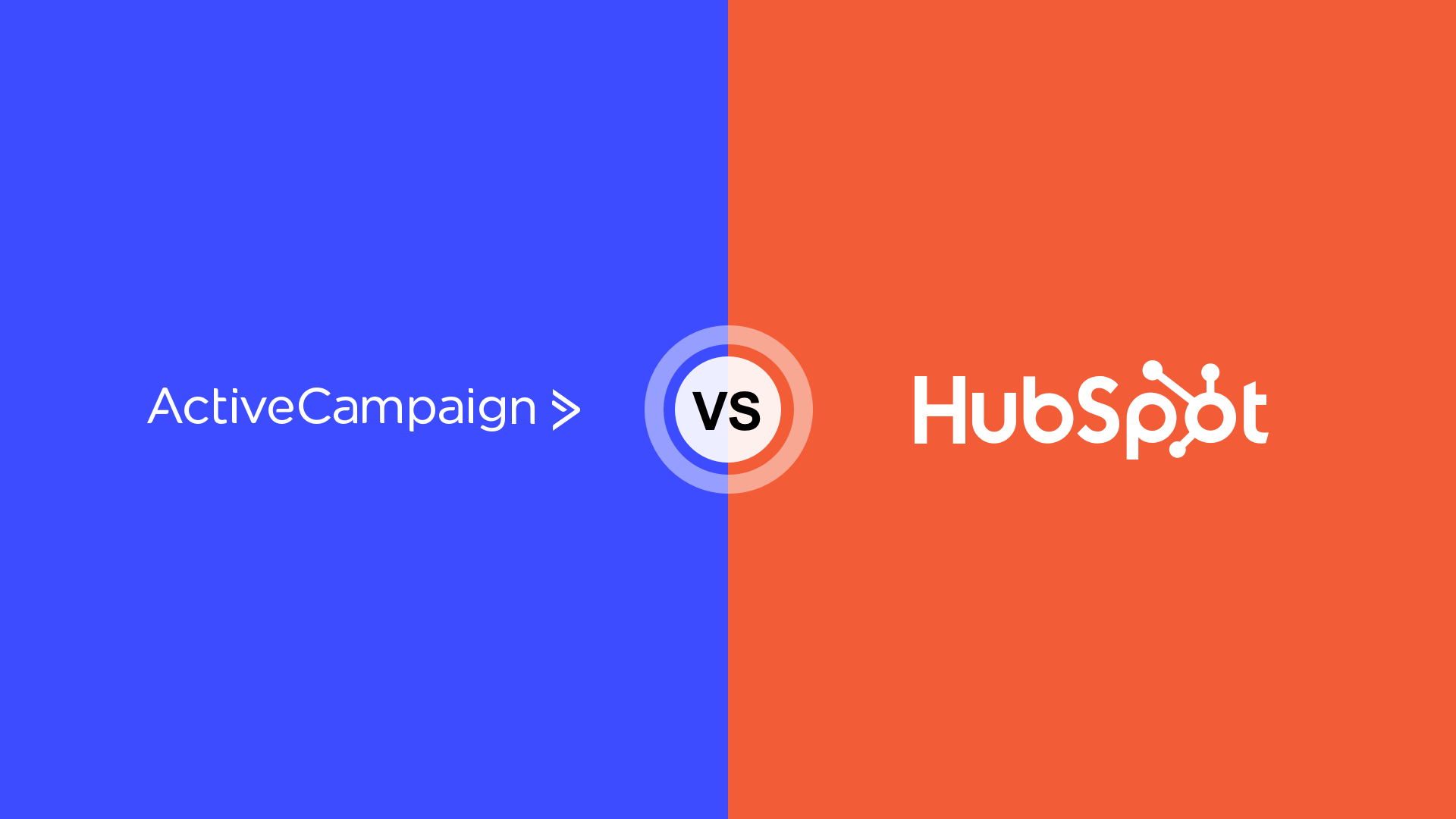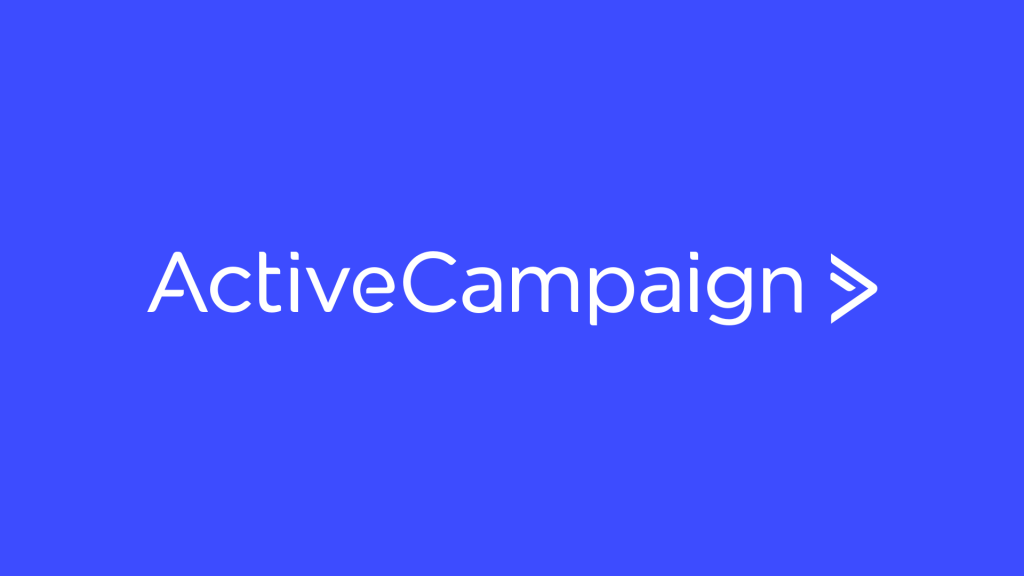
Image: ActiveCampaign vs HubSpot
ActiveCampaign vs HubSpot
In digital marketing and customer relationship management (CRM), choosing the right tools can be a game-changer for businesses of all sizes. With the plethora of options available, it becomes crucial to understand and compare the features, benefits, and limitations of leading platforms. In this context, ActiveCampaign and HubSpot emerge as two of the most prominent solutions. Each offering a unique set of capabilities and advantages. We have previously looked at each of them individually, but now let’s do a ActiveCampaign vs HubSpot.
ActiveCampaign, renowned for its advanced email marketing and automation features, has carved a niche for itself. Especially among small to medium-sized businesses. HubSpot, on the other hand, stands out as a comprehensive all-in-one platform. Integrating marketing, sales, and customer service tools into a seamless experience.
This article aims to provide an in-depth comparison between ActiveCampaign and HubSpot. Delving into various aspects such as their features, user experience, pricing, customer support, and ideal use cases. Whether you are a small business owner, a marketing professional. Or a decision-maker in a larger corporation. This comparison will equip you with the necessary insights to choose the platform that best aligns with your business needs and objectives.
By examining each platform’s strengths and weaknesses, we’ll explore how ActiveCampaign and HubSpot can help businesses optimize their marketing efforts. Improve customer relationships, and drive growth in an increasingly competitive digital landscape. Let’s dive in to understand which platform could be the right choice for your business.
Background of Both Platforms
ActiveCampaign
History and Evolution
- Founded in 2003, ActiveCampaign started as a software consulting firm before pivoting to email marketing.
- Over the years, it has evolved into a comprehensive marketing automation platform with a strong emphasis on customer experience automation.
- ActiveCampaign’s growth has been marked by its focus on small to medium-sized businesses, offering them affordable yet powerful automation tools.
Core Strengths and Primary Focus Areas
- Email Marketing: Known for its advanced email marketing capabilities, including segmenting, personalization, and triggered emails.
- Marketing Automation: Offers robust automation workflows that cater to various stages of the customer journey.
- CRM Capabilities: Integrates CRM features seamlessly with marketing automation, making it easier for businesses to manage their customer interactions and sales processes.
- User Accessibility: Designed to be user-friendly, catering to businesses without extensive technical expertise.
HubSpot
History and Evolution
- Launched in 2006, HubSpot has been a pioneer in inbound marketing, a strategy based on attracting customers through content and interactions that are relevant and helpful.
- HubSpot has grown from a simple marketing tool into a comprehensive CRM platform, encompassing sales, marketing, and customer service.
- The company has consistently added new features and tools. Focusing on an integrated approach to managing all aspects of customer relationships.
Core Strengths and Primary Focus Areas
- All-in-One Solution: HubSpot provides an extensive suite of tools covering marketing, sales, and service, all integrated into a single platform.
- Inbound Marketing: Remains at the forefront of inbound marketing, with tools designed to attract, engage, and delight customers.
- Content Management System (CMS): Offers a powerful CMS that integrates with its marketing tools. Making it easier for businesses to manage their online presence.
- Data Analytics and Reporting: Strong emphasis on analytics and reporting, allowing businesses to make data-driven decisions.
- Scalability: HubSpot scales effectively, catering to the needs of small businesses as well as large enterprises.
Feature Comparison
Here we delve into a detailed comparison of the features offered by ActiveCampaign and HubSpot. We’ll examine how each platform handles various aspects of digital marketing and customer relationship management.
Email Marketing Capabilities
ActiveCampaign
- Automation Tools: Offers advanced automation capabilities, including complex triggers and segmentation.
- Template Designs and Customizability: Provides a wide range of customizable email templates, catering to various industries and purposes.
- Personalization: Strong focus on personalization and dynamic content to engage different segments of the audience.
HubSpot
- Automation Tools: Automation is more integrated with inbound marketing strategies, focusing on customer journey and content delivery.
- Template Designs and Customizability: HubSpot also offers a variety of templates, with a strong emphasis on design and user experience.
- Personalization: Equipped with powerful personalization features, leveraging detailed customer data from its CRM system.
CRM and Sales Features
ActiveCampaign
- Lead Tracking and Management: Effective at tracking customer interactions and managing leads through customized pipelines.
- Sales Pipeline Management: Offers visual sales pipelines but is more limited in terms of advanced sales features compared to HubSpot.
HubSpot
- Lead Tracking and Management: Comprehensive CRM capabilities, tracking every interaction with leads and customers.
- Sales Pipeline Management: Advanced sales features like deal tracking, stage-by-stage pipeline management, and detailed sales reporting.
Marketing Automation
ActiveCampaign
- Workflow Automation Capabilities: Known for its powerful and flexible marketing automation workflows.
- Integration with Other Tools: Provides extensive integration options with other tools, enhancing its automation capabilities.
HubSpot
- Workflow Automation Capabilities: Focuses on seamless automation that ties together sales, marketing, and customer service.
- Integration with Other Tools: Offers a wide range of integrations, though some advanced integrations might require higher-tier plans.
Analytics and Reporting
ActiveCampaign
- Types of Reports and Analytics Available: Offers detailed campaign analytics, contact trends, and automation reports.
- User-Friendliness and Customization of Reports: Reports are user-friendly, but customization options might be less extensive than HubSpot.
HubSpot
- Types of Reports and Analytics Available: Provides comprehensive analytics across marketing, sales, and service sectors.
- User-Friendliness and Customization of Reports: Highly customizable reporting tools, allowing in-depth analysis of marketing and sales efforts.
In summary, while both ActiveCampaign and HubSpot offer robust email marketing, CRM, marketing automation, and analytis features, there are nuances in their approaches. ActiveCampaign is highly regarded for its advanced email marketing and automation tools, especially suitable for businesses focusing on these aspects. HubSpot, in contrast, offers a more integrated all-in-one solution that encompasses a broader range of CRM, sales, and marketing functionalities. Making it ideal for businesses looking for a comprehensive platform.
User Experience and Interface
In this section, we compare the user experience and interface of ActiveCampaign and HubSpot. Focusing on their usability, design, and overall user satisfaction.
ActiveCampaign
User Interface
- Design: ActiveCampaign’s interface is functional and straightforward, with a focus on usability. However, some users might find the design a bit dated compared to more modern platforms.
- Navigation: The platform’s navigation is logical and intuitive, making it easy for users to find what they need. However, due to the extensive range of features, new users might experience a learning curve.
Ease of Use
- For Beginners: ActiveCampaign offers a range of tutorials and support materials, which are particularly helpful for beginners. The platform’s automation features, while powerful, might require a bit of learning for those new to email marketing automation.
- For Advanced Users: Advanced users can fully leverage the platform’s robust automation and segmentation capabilities, appreciating the depth and flexibility offered.
HubSpot
User Interface
- Design: HubSpot boasts a modern and sleek interface, which is frequently updated to stay in line with current design trends. The platform is visually appealing and professional.
- Navigation: The layout is intuitive, with a clear structure that makes it easy for users to access different tools and features. The integrated nature of the platform allows for seamless transitions between marketing, sales, and service tools.
Ease of Use
- For Beginners: HubSpot is known for its user-friendly approach, making it an excellent choice for beginners. The platform provides extensive educational resources, including HubSpot Academy, to help new users get up to speed.
- For Advanced Users: While user-friendly, HubSpot also caters to more advanced users with its comprehensive set of tools and features. The platform allows for sophisticated marketing strategies, analytics, and CRM activities.
Comparative Analysis
- Learning Curve: Both platforms have a learning curve, but HubSpot’s more intuitive interface might be easier for beginners. ActiveCampaign’s advanced features, while powerful, might take more time to master.
- Customization: ActiveCampaign offers significant customization in its automation workflows, appealing to users who need tailored solutions. HubSpot, while also customizable, places more emphasis on integration and all-in-one functionality.
- Support and Resources: Both platforms provide ample support and educational resources. But HubSpot stands out with its extensive HubSpot Academy and community forums.
In summary, ActiveCampaign offers a functional and straightforward interface with powerful features that may require some initial learning. HubSpot, on the other hand, combines an aesthetically pleasing design with an intuitive user experience. Making it accessible for beginners while still offering depth for advanced users. The choice between the two may depend on the user’s familiarity with such platforms and their specific needs for customization and integration.
Integration and Extensibility
In this section, we explore the capabilities of ActiveCampaign and HubSpot in terms of integration with other tools and platforms. As well as their extensibility through APIs and custom development options.
ActiveCampaign
Integration Capabilities
- Range of Integrations: ActiveCampaign boasts a wide array of integration options with over 850 third-party apps and services. This range includes popular tools for eCommerce, customer service, accounting, and more.
- Ease of Integration: The platform facilitates easy integration with most major tools, often requiring minimal technical expertise.
API and Custom Development
- API Access: ActiveCampaign offers API access, enabling businesses to build custom integrations and workflows.
- Custom Development: While ActiveCampaign supports custom development, it might require more technical expertise, especially for more complex integrations or customizations.
HubSpot
Integration Capabilities
- Range of Integrations: HubSpot offers a comprehensive ecosystem with a vast array of integrations. Particularly strong in its native integrations with other HubSpot tools.
- Ease of Integration: Known for its seamless integration capabilities, HubSpot allows businesses to easily connect and synchronize data across various platforms.
API and Custom Development
- API Access: HubSpot provides extensive API access, encouraging users to create bespoke solutions that integrate with their HubSpot data.
- Custom Development: HubSpot supports custom development, often with a more user-friendly approach compared to ActiveCampaign. This includes options for businesses to develop their own apps or features within the HubSpot framework.
Comparative Analysis
- Integration Flexibility: Both platforms provide a broad range of integration options. But the specific needs of a business might align better with one platform over the other based on the available integrations.
- Technical Requirements: ActiveCampaign may require a higher level of technical expertise for complex custom developments. Whereas HubSpot tends to be more accessible for users with varying levels of technical ability.
- Ecosystem: HubSpot’s integrated ecosystem can be a significant advantage for businesses looking for a unified solution across marketing, sales, and customer service.
In conclusion, both ActiveCampaign and HubSpot excel in integration capabilities and offer robust API access for custom development. The choice between them might depend on the specific third-party tools a business uses, the level of customization required, and the technical resources available to the business. HubSpot’s integrated ecosystem and user-friendly approach make it particularly appealing for businesses seeking a seamless, all-in-one solution. While ActiveCampaign’s flexibility and extensive range of integrations cater well to businesses looking for highly tailored automation solutions.
Pricing and Plans
This section provides a detailed comparison of the pricing structures and plans offered by ActiveCampaign and HubSpot, helping businesses understand the cost implications of each platform.
ActiveCampaign
Pricing Structure
- Tiered Pricing: ActiveCampaign uses a tiered pricing model based on the number of contacts and the level of features required. Plans include Lite, Plus, Professional, and Enterprise.
- Cost Variations: Prices increase with the number of contacts and the inclusion of more advanced features. The Lite plan is the most affordable, mainly offering basic email marketing and automation.
Plan Inclusions
- Lite Plan: Offers basic email marketing, automation, and CRM capabilities.
- Plus Plan: Includes more advanced features like landing pages, contact scoring, and CRM enhancements.
- Professional and Enterprise Plans: These plans provide more sophisticated features such as predictive sending, advanced reporting, and dedicated account support.
Additional Costs
- Add-Ons and Upgrades: Additional costs may arise for add-ons like custom domain and dedicated IP.
- Overage Charges: ActiveCampaign may charge overage fees if the number of contacts exceeds the limit of the current plan.
HubSpot
Pricing Structure
- Freemium Model: HubSpot operates on a freemium model, offering a free version with basic features and paid plans that include additional functionalities.
- Paid Plans: Paid plans include Starter, Professional, and Enterprise, each offering progressively more features and capabilities.
Plan Inclusions
- Free Plan: Includes basic CRM functions, email marketing, and data insights.
- Starter Plan: Expands on the free plan with additional marketing tools, reporting, and customer support features.
- Professional and Enterprise Plans: These plans offer advanced marketing automation, sales, and service features, along with extensive customization and reporting capabilities.
Additional Costs
- Add-Ons: HubSpot offers various add-ons for additional features, which can significantly increase the overall cost.
- Scaling Costs: As a business grows and requires more contacts or advanced features, the cost can increase substantially.
Comparative Analysis
- Cost-Effectiveness: ActiveCampaign generally offers more competitive pricing, especially for small to mid-sized businesses. HubSpot, while starting with a free plan, can become more expensive as additional features and contacts are added.
- Plan Flexibility: Both platforms offer a range of plans to suit different business needs, but HubSpot’s freemium model allows businesses to start with no upfront cost.
- Long-Term Value: The decision between ActiveCampaign and HubSpot often comes down to the specific needs of a business and the long-term value they expect from their investment in marketing and CRM tools.
In summary, ActiveCampaign and HubSpot cater to different budgetary requirements and business sizes. While ActiveCampaign provides a more straightforward tiered pricing model. HubSpot’s freemium model offers initial cost savings but may become more expensive as a business scales. Businesses should consider not only the initial cost but also the potential long-term investment and how the features of each platform align with their growth and marketing strategies.
Customer Support and Community
This section examines the customer support options and community engagement of ActiveCampaign and HubSpot, crucial factors for users requiring assistance and resources for maximizing their use of these platforms.
ActiveCampaign
Customer Support Channels
- Support Options: ActiveCampaign provides support through email, live chat, and a help center with a wealth of articles and tutorials.
- Availability: The level of direct support access varies by plan, with higher-tier plans offering more personalized support.
Quality of Customer Service
- User Feedback: Feedback from users generally highlights ActiveCampaign’s responsive and helpful support team, though some users have noted longer response times during peak periods.
- Expertise and Helpfulness: The support team is knowledgeable about the platform, providing effective solutions and guidance.
Community and Educational Resources
- User Community: ActiveCampaign has an active user community, including forums and user groups, where users can share tips and best practices.
- Educational Resources: Offers extensive resources such as webinars, guides, and a blog, providing valuable information for both beginners and advanced users.
HubSpot
Customer Support Channels
- Support Options: HubSpot offers email, phone, and live chat support, with the availability of these channels depending on the subscription plan.
- Availability: Premium support is available with higher-tier plans, offering more immediate and in-depth assistance.
Quality of Customer Service
- User Feedback: HubSpot is often praised for its high-quality customer support, with users appreciating the promptness and expertise of the support team.
- Expertise and Helpfulness: The support team is well-regarded for its thorough understanding of the platform and its ability to provide comprehensive solutions.
Community and Educational Resources
- User Community: HubSpot’s community is robust, featuring an active forum, user groups, and local meetups, facilitating peer-to-peer support and networking.
- Educational Resources: HubSpot stands out with its HubSpot Academy, offering extensive courses, certifications, and resources that are highly valued in the digital marketing community.
Comparative Analysis
- Support Quality and Accessibility: Both platforms provide quality customer support, but HubSpot’s extensive support network and educational resources might give it an edge, especially for businesses seeking comprehensive learning materials.
- Community Engagement: ActiveCampaign and HubSpot both foster active user communities, but HubSpot’s larger user base and more extensive range of resources, including HubSpot Academy, provide a more vibrant community experience.
- Resource Availability: The availability of in-depth educational resources and community support can significantly impact user experience, especially for businesses with limited prior experience in digital marketing and CRM.
In summary, while both ActiveCampaign and HubSpot offer reliable customer support and active communities, HubSpot’s extensive educational resources and larger community might be more appealing to users who value learning and community engagement. The quality of customer service is high for both platforms, but HubSpot’s broader range of support options and resources provides a more comprehensive support ecosystem.
Pros and Cons
This section outlines the main advantages and drawbacks of ActiveCampaign and HubSpot, providing a balanced view to help businesses assess which platform suits their needs better.
ActiveCampaign
Pros
- Advanced Email Marketing and Automation: ActiveCampaign excels in delivering sophisticated email marketing and automation capabilities, making it ideal for businesses focused on leveraging these aspects.
- Customization and Flexibility: Offers a high degree of customization, especially in automation workflows, catering to businesses with specific process needs.
- Cost-Effectiveness: Generally more affordable than HubSpot, especially for small to mid-sized businesses, with a straightforward pricing model.
- Integration Options: Provides a wide range of integration possibilities with over 850 third-party apps and services.
Cons
- Learning Curve: The platform’s extensive features can present a steep learning curve for beginners or those not familiar with marketing automation tools.
- Limited CRM Features in Lower Plans: While CRM capabilities are present, they are less comprehensive in lower-tier plans compared to HubSpot.
- Design and Interface: Some users may find the interface less modern or intuitive compared to HubSpot’s sleek design.
HubSpot
Pros
- All-in-One Platform: Offers a comprehensive suite of tools for marketing, sales, and customer service, making it an ideal solution for businesses seeking an integrated approach.
- User-Friendly Interface: Known for its intuitive and modern interface, HubSpot is accessible to users of all skill levels, including beginners.
- Extensive Educational Resources: HubSpot Academy and other learning resources are unparalleled, providing valuable knowledge for users.
- Robust Community and Support: Benefits from a large, active community and excellent customer support, offering a wealth of shared knowledge and networking opportunities.
Cons
- Cost: Can be expensive, especially as businesses grow and require more advanced features or additional contacts.
- Complexity for Small Businesses: Some small businesses might find HubSpot’s extensive features more than they need, leading to underutilization of the platform.
- Integration Costs: While offering a wide range of integrations, some of the more advanced integrations may require higher-tier plans, adding to the overall cost.
Comparative Summary
- ActiveCampaign is best suited for businesses that prioritize advanced email marketing and automation capabilities at a more affordable price point. It is particularly beneficial for those who need a high degree of customization in their marketing efforts.
- HubSpot is ideal for businesses looking for an all-in-one solution that covers not just marketing, but also sales and customer service, and are willing to invest in a more comprehensive system. Its user-friendly interface and extensive educational resources make it a great choice for businesses of all sizes, including those new to digital marketing.
In conclusion, the choice between ActiveCampaign and HubSpot depends on the specific needs, size, and budget of a business, as well as the importance placed on aspects like automation capabilities, integration options, user interface, and educational resources. Both platforms have their unique strengths and limitations, and the best choice will vary based on individual business requirements and goals.
Use Case Scenarios
This section outlines typical customer profiles and scenarios where ActiveCampaign or HubSpot might be a better fit, helping businesses identify which platform aligns best with their specific needs.
ActiveCampaign Use Cases
- Small to Medium-Sized Businesses Focusing on Email Marketing
- Businesses that prioritize advanced email marketing and automation but have a limited budget might find ActiveCampaign’s sophisticated email tools and more affordable pricing more suitable.
- E-commerce Platforms Seeking Customized Marketing Automation
- E-commerce businesses looking for deep customization in marketing automation to enhance customer experience and increase sales can benefit from ActiveCampaign’s flexibility and integration capabilities.
- Companies with a Need for Detailed Segmentation and Personalization
- Organizations that rely heavily on segmented marketing campaigns and personalized customer journeys can leverage ActiveCampaign’s robust segmentation tools and dynamic content features.
HubSpot Use Cases
- Businesses Seeking an All-in-One CRM Solution
- Companies requiring a comprehensive platform that integrates marketing, sales, and customer service will find HubSpot’s all-in-one approach ideal for streamlining operations and data management.
- Startups and SMBs Needing Scalable Solutions
- Startups and small to medium-sized businesses that plan to scale quickly can benefit from HubSpot’s scalable features, starting with basic functionalities and gradually moving to more advanced tools as they grow.
- Organizations Focusing on Inbound Marketing Strategies
- Businesses that are heavily invested in inbound marketing will appreciate HubSpot’s strong capabilities in content management, SEO, and lead nurturing, all designed to attract and engage customers organically.
Comparative Analysis
- Budget and Scale: ActiveCampaign is generally more budget-friendly and may be better suited for businesses with a strong focus on email marketing and automation. HubSpot, while potentially more expensive, offers more value for businesses looking for scalable, all-encompassing CRM solutions.
- Technical Expertise and Resources: Businesses with limited technical resources might prefer HubSpot for its user-friendly interface and extensive support and educational resources. In contrast, ActiveCampaign is well-suited for businesses with some technical know-how or those willing to invest time in learning its more complex features.
- Long-term Business Strategy: The choice between ActiveCampaign and HubSpot should align with the long-term strategy of the business. ActiveCampaign is ideal for targeted, sophisticated marketing automation, while HubSpot serves businesses seeking comprehensive growth through integrated marketing, sales, and service efforts.
In conclusion, the decision between ActiveCampaign and HubSpot hinges on the specific requirements, growth trajectory, and strategic goals of a business. Understanding these use case scenarios can guide businesses in choosing the platform that best fits their current needs and future aspirations.
Conclusion
In this article, we have provided a comprehensive comparison between ActiveCampaign and HubSpot, examining various aspects like features, user experience, pricing, customer support, and typical use cases. The aim was to offer insights that can help businesses make an informed decision when choosing between these two prominent marketing automation and CRM platforms.
Key Takeaways
- Feature Set: ActiveCampaign shines with its advanced email marketing and automation features, while HubSpot offers a more integrated all-in-one solution encompassing marketing, sales, and customer service.
- User Experience: HubSpot boasts a more modern and user-friendly interface, making it accessible for users of all skill levels, whereas ActiveCampaign offers deep customization capabilities, albeit with a steeper learning curve.
- Pricing: ActiveCampaign generally presents a more budget-friendly option, especially for small to mid-sized businesses, while HubSpot, starting with a free plan, can become more costly as additional features and contacts are added.
- Customer Support and Community: Both platforms offer reliable customer support, but HubSpot stands out with its extensive educational resources and a larger, more active user community.
- Best Fit Scenarios: ActiveCampaign is ideal for businesses focusing on sophisticated email marketing and automation on a budget, while HubSpot is better suited for businesses seeking an integrated CRM solution that grows with them.
Comparison Table
| Feature | ActiveCampaign | HubSpot |
|---|---|---|
| Focus | Advanced email marketing and automation | Comprehensive all-in-one CRM solution |
| Pricing | Tiered pricing based on contacts and features | Freemium model with scalable paid plans |
| Email Marketing | Highly customizable with sophisticated automation | Integrated with CRM and inbound marketing strategies |
| CRM & Sales Features | Effective lead tracking, basic CRM in lower plans | Extensive CRM capabilities across all plans |
| User Interface | Functional and straightforward, slightly dated | Modern, sleek, and user-friendly |
| Ease of Use | Steeper learning curve, especially for beginners | Intuitive and accessible for users of all skill levels |
| Integrations | Wide range of third-party integrations | Seamless integrations, especially within HubSpot tools |
| Analytics | Detailed campaign and contact analytics | Comprehensive analytics across marketing and sales |
| Customer Support | Email, live chat, and a resourceful help center | Email, phone, live chat, with extensive resources |
| Ideal for | Small to mid-sized businesses, e-commerce | Businesses seeking an integrated approach, SMBs to enterprises |
Final Thoughts
The choice between ActiveCampaign and HubSpot should be driven by a business’s specific needs, size, and growth strategy. While both platforms offer robust functionalities, they cater to different aspects of marketing automation and CRM.
For businesses focused primarily on advanced email marketing and requiring high customization, ActiveCampaign is a strong contender. On the other hand, HubSpot is the go-to choice for companies looking for an all-encompassing platform that not only supports marketing efforts but also seamlessly integrates sales and customer service functionalities.
Ultimately, the decision should align with the business goals, budget, and the level of integration and automation required. Both ActiveCampaign and HubSpot are capable of driving significant improvements in customer engagement and business growth, but the best choice will depend on how well their offerings align with the unique demands and aspirations of each business.
References
To ensure the accuracy and credibility of this article, information was gathered from a variety of reliable sources. These include:
Official Websites and Documentation
- Direct information from the official websites of ActiveCampaign and HubSpot provided insights into their latest features, pricing models, and company policies.
- Product documentation and user guides offered detailed understanding of the functionalities and capabilities of each platform.
User Reviews and Testimonials
- Online articles previously written by ourselves (ActiveCampaign and HubSpot) together with others, where users share their experiences and ratings, were instrumental in understanding real-world applications and user satisfaction.
- Customer testimonials on independent review sites and forums provided valuable perspectives on the strengths and weaknesses of both tools.
Industry Reports and Analyses
- Reports from market research firms and industry analyses helped in understanding the market position and the evolving trends in marketing automation and CRM solutions.
- Comparative studies by technology experts and industry thought leaders offered an unbiased view of each platform’s performance in various scenarios.
Webinars and Educational Resources
- Webinars, tutorials, and educational content from both ActiveCampaign and HubSpot, including their respective academies, provided in-depth knowledge of the platforms.
- Industry blogs and articles discussing marketing strategies, automation tools, and CRM solutions contributed additional insights.
Community Forums and Discussion Groups
- Active user communities, discussion forums, and social media groups were crucial in understanding how both ActiveCampaign and HubSpot are used in different business contexts.
- Questions, answers, and discussions in these forums highlighted common challenges, best practices, and user tips.
These sources were meticulously reviewed to present a comprehensive and balanced comparison of ActiveCampaign and HubSpot. This approach ensures that the article is not only informative but also grounded in practical knowledge and real-world experiences. The references serve as a foundation for the analysis and conclusions drawn in the article, providing readers with a reliable guide to make informed decisions.



